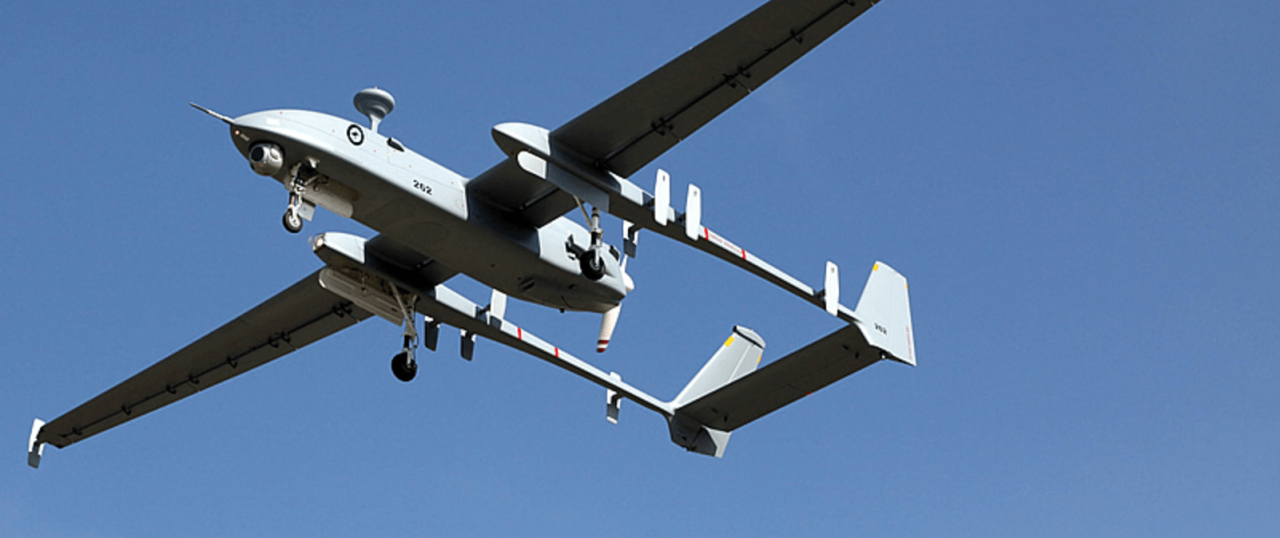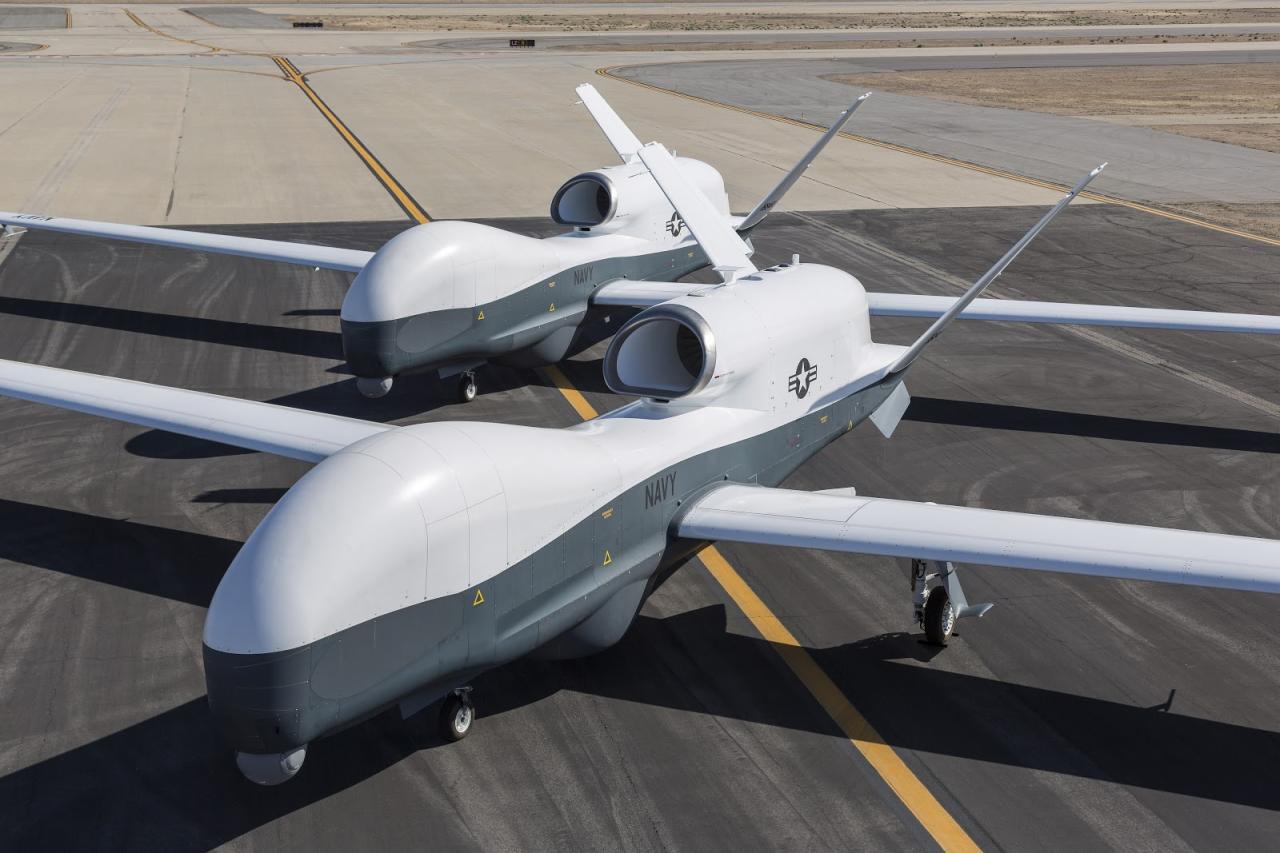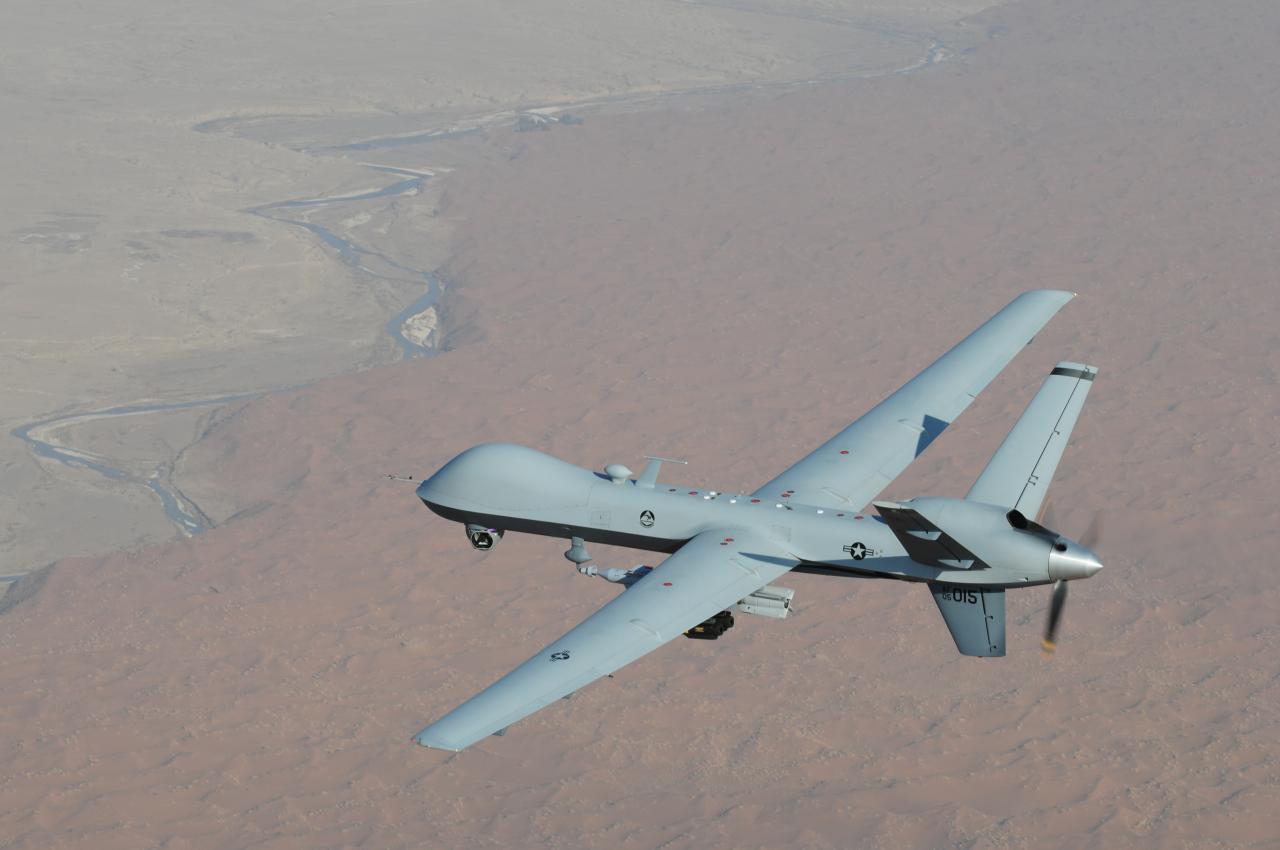Predator drones have revolutionized warfare and are increasingly finding applications in civilian sectors. From their initial development as reconnaissance aircraft, these unmanned aerial vehicles (UAVs) have evolved into sophisticated platforms capable of carrying out complex missions, sparking both immense interest and significant ethical debate. This exploration delves into the technological advancements, military and civilian applications, economic impacts, and the complex legal and ethical considerations surrounding these powerful machines.
We’ll examine the various Predator drone models, comparing their capabilities and exploring the technological innovations that have driven their evolution. We’ll also investigate the significant role these drones play in modern conflicts, analyzing their strategic advantages and the associated ethical dilemmas, including targeted killings and the shifting rules of engagement. Finally, we’ll look towards the future, considering potential advancements and the expanding potential for Predator drone technology in both military and civilian contexts.
Predator drones, those unmanned aerial vehicles, are increasingly reliant on reliable communication networks for real-time data transmission. Think about the bandwidth needed for high-resolution imagery and precise targeting; that’s where a robust provider like bell mts could be crucial. Without consistent connectivity, a predator drone’s effectiveness is severely hampered, making reliable network infrastructure a vital component of modern military operations.
Technological Aspects of Predator Drones
Predator drones, initially conceived as relatively simple surveillance platforms, have undergone a dramatic technological evolution. This evolution has significantly enhanced their capabilities, transforming them into sophisticated, multi-role unmanned aerial vehicles (UAVs) with widespread military and increasingly civilian applications.
Predator Drone Technology Evolution
From its initial iterations as a primarily reconnaissance aircraft, the Predator drone lineage has seen substantial advancements in areas like endurance, payload capacity, sensor technology, and communication systems. Early models possessed limited flight time and relied on basic imaging systems. Modern iterations, however, boast significantly extended flight durations, advanced sensors (including Synthetic Aperture Radar – SAR and Electro-Optical/Infrared – EO/IR), and sophisticated data-linking capabilities enabling real-time intelligence gathering and transmission.
Key Technological Components of Predator Drones
A Predator drone’s effectiveness stems from the integration of several critical technological components. These include high-resolution electro-optical and infrared cameras for visual surveillance and target identification, advanced communication systems for reliable data transmission over long distances, and a range of precision-guided munitions for offensive capabilities.
Comparison of Predator Drone Models

The Predator family comprises several models, each tailored to specific mission requirements. These variations showcase the evolution of drone technology, reflecting advancements in endurance, payload capacity, and sensor sophistication. The differences are apparent in their operational range, sensor types, and weapon integration.
| Model | Wingspan (ft) | Endurance (hrs) | Payload (lbs) |
|---|---|---|---|
| MQ-1 Predator | 48 | 40+ | 1000 |
| MQ-9 Reaper | 66 | 27+ | 3000 |
| MQ-1C Gray Eagle | 52 | 25+ | 1500 |
Military Applications of Predator Drones
Predator drones have revolutionized modern warfare, significantly altering the dynamics of conflict and intelligence gathering. Their unique capabilities have reshaped tactical and strategic decision-making processes in various military operations.
Predator Drones in Modern Warfare
Predator drones are extensively used for reconnaissance, surveillance, and target acquisition. They provide real-time intelligence, enabling timely decision-making during conflicts. Examples include their use in counter-terrorism operations, providing persistent surveillance over suspected terrorist locations and carrying out targeted strikes. Their use in Afghanistan and Iraq are widely documented.
Ethical Implications of Targeted Killings

The use of Predator drones for targeted killings raises significant ethical concerns. Issues of proportionality, collateral damage, and the lack of transparency surrounding such operations have drawn considerable criticism from human rights organizations and legal scholars. The lack of a clear chain of command and accountability for drone strikes adds to the complexity of these ethical dilemmas.
Impact of Predator Drones on Rules of Engagement
The introduction of Predator drones has significantly impacted the rules of engagement in armed conflict. The ability to conduct strikes with minimal risk to human pilots has altered the risk calculus in military decision-making, and potentially blurred lines in the definition of active combat zones.
- Advantages: Increased surveillance capabilities, reduced risk to human pilots, precise targeting, cost-effectiveness (compared to manned aircraft for certain missions).
- Disadvantages: Ethical concerns surrounding targeted killings, potential for civilian casualties, risk of escalating conflicts, technological dependence, vulnerability to electronic warfare.
Civilian Applications of Predator Drones
The technological advancements in Predator drones, initially developed for military use, offer significant potential for civilian applications. Adapting this technology for non-military purposes presents both opportunities and challenges.
Potential Civilian Applications
Predator drone technology is being adapted for various civilian uses, including search and rescue operations (locating missing persons or disaster survivors), environmental monitoring (tracking deforestation, wildlife populations, or pollution levels), and infrastructure inspection (assessing bridges, pipelines, or power lines). Their long endurance and advanced sensor capabilities are particularly valuable in these contexts.
Challenges and Opportunities in Civilian Adaptation
Adapting military drone technology for civilian use presents challenges related to regulatory frameworks, public acceptance, and cost-effectiveness. However, the potential benefits in terms of improved safety, efficiency, and reduced costs are substantial. Overcoming these hurdles requires collaborative efforts between governments, industry, and researchers.
Regulatory Frameworks for Civilian Drones
The regulatory landscape for civilian drones is evolving rapidly, with varying regulations across different countries. These regulations address issues such as airspace management, pilot licensing, data privacy, and liability in case of accidents. The regulatory frameworks for military and civilian drone use differ significantly, reflecting the distinct operational contexts and risk profiles.
Examples of successful civilian applications of similar drone technologies include using smaller commercial drones for precision agriculture (spraying crops, monitoring plant health), and using drones for delivering medical supplies in remote areas. These examples demonstrate the versatility and potential of drone technology outside of the military realm.
The Economic Impact of Predator Drones
The development, manufacturing, and operation of Predator drones have significant economic implications, affecting both the defense industry and broader sectors. Understanding these economic aspects is crucial for evaluating the overall impact of this technology.
Costs Associated with Predator Drones
The cost of developing, manufacturing, and operating Predator drones is substantial. Initial research and development costs are high, followed by ongoing expenses for maintenance, repair, pilot training, and sensor upgrades. Operational costs also include fuel, communication infrastructure, and data analysis.
Economic Benefits and Drawbacks
While the initial investment in Predator drones is considerable, their use can lead to cost savings in certain military operations compared to using manned aircraft. However, the long-term economic consequences, including the ethical costs associated with their use, must be carefully considered. The economic impact on the defense industry is positive due to job creation, but the societal costs related to potential conflicts and casualties should be factored in.
Impact on the Defense Industry and Job Markets
The Predator drone program has stimulated growth in the defense industry, creating jobs in engineering, manufacturing, software development, and operations. However, the increasing automation of drone technology could potentially displace some traditional jobs in the aviation sector in the long run.
| Aspect | Predator Drone | Traditional Manned Aircraft |
|---|---|---|
| Initial Cost | High (but decreasing with mass production) | Very High |
| Operational Cost per hour | Relatively Low | Very High |
| Maintenance Cost | Moderate | High |
| Pilot Training Cost | Lower (requires specialized training, but less extensive than manned aircraft) | Very High |
Legal and Ethical Considerations
The use of Predator drones raises complex legal and ethical questions that demand careful consideration. International law, human rights, and moral principles intersect in intricate ways when assessing the legitimacy and implications of drone warfare.
Predator drones, those high-tech surveillance aircraft, rely on strong, reliable communication links. To ensure optimal performance, you need a solid wifi connection; finding out if you’re using the 2.4GHz or 5GHz band is key, so check it out by following these simple steps on how to check your wifi ghz on iphone. Knowing your wifi frequency helps maximize the drone’s operational range and data transfer speeds, crucial for effective intelligence gathering.
International Legal Framework, Predator drone
The international legal framework governing the use of force in armed conflict, particularly the UN Charter and international humanitarian law (IHL), provides the basis for evaluating the legality of Predator drone strikes. Key aspects include the principles of distinction (between combatants and civilians), proportionality (between military advantage and civilian harm), and precaution (to minimize civilian casualties).
Ethical Dilemmas of Autonomous Weapons Systems
The increasing autonomy of weapons systems, including Predator drones, raises profound ethical concerns. Questions of accountability, the potential for unintended harm, and the erosion of human control over lethal force are central to these debates. The potential for malfunction or hacking adds another layer of complexity.
Accountability for Drone Actions
Establishing accountability for actions taken by Predator drones is a significant challenge. The lack of transparency surrounding drone operations, coupled with the complexities of chain of command and jurisdiction, makes it difficult to determine responsibility for civilian casualties or other unintended consequences.
Predator drones, with their advanced tech, need powerful computers to control them. You’ll need a solid motherboard, and for building a powerful system, check out the specs and setup instructions in the msi b650 gaming plus wifi manual if you’re planning a ground station build. Understanding the hardware is key to operating a predator drone effectively.
International law and human rights considerations are crucial in shaping the legal and ethical frameworks for the use of Predator drones. Striking a balance between national security interests and the protection of human rights is essential in navigating this complex landscape.
Public Perception and Media Representation
Public perception of Predator drones is significantly shaped by media representation. The way these technologies are portrayed in news reports, documentaries, and other media outlets can influence public opinion and policy debates.
Media Portrayal of Predator Drones
Media portrayals of Predator drones often focus on their use in targeted killings and the associated ethical dilemmas. Recurring themes include concerns about civilian casualties, the lack of transparency, and the potential for abuse. These portrayals often reflect differing perspectives, ranging from strong condemnation to qualified support, depending on the specific context and media outlet.
Public Perception Across Countries and Cultures

Public opinion on Predator drones varies considerably across countries and cultures. In some countries, there is strong opposition to their use, while in others, there is greater acceptance, particularly in the context of counter-terrorism efforts. Cultural values and national security priorities play a significant role in shaping these diverse perceptions.
Influence of Media Coverage on Public Opinion
Media coverage significantly influences public opinion on the use of Predator drones. Sensationalized reporting of civilian casualties or controversial strikes can generate public outrage and fuel calls for greater regulation. Conversely, positive portrayals emphasizing the drones’ effectiveness in counter-terrorism or disaster relief can foster more favorable public attitudes.
“The 2016 incident involving a civilian drone strike in Yemen, where a large number of civilian casualties were reported, sparked intense public debate and criticism of the use of drones in civilian areas. This incident significantly impacted public opinion globally and led to renewed calls for greater accountability and transparency.”
Future Developments in Predator Drone Technology
The field of Predator drone technology is constantly evolving, with ongoing research and development efforts focused on enhancing their capabilities and expanding their applications.
Potential Future Advancements
Future advancements in Predator drone technology are likely to include increased autonomy (allowing drones to operate with minimal human intervention), improved sensor capabilities (providing more detailed and accurate intelligence), and enhanced intelligence gathering (through the integration of artificial intelligence and big data analytics). Advances in swarm technology, allowing coordinated operation of multiple drones, are also likely.
Implications for Military and Civilian Applications

These advancements will have significant implications for both military and civilian applications. Increased autonomy could lead to more efficient and effective military operations, while improved sensor capabilities could enhance civilian applications such as environmental monitoring and infrastructure inspection. However, ethical concerns and the potential for misuse must be addressed.
Challenges and Risks
Future developments in Predator drone technology also present challenges and risks. The increasing autonomy of drones raises concerns about the potential for unintended consequences and the erosion of human control. The risk of hacking or malfunction is also a significant concern, particularly as drones become more sophisticated and integrated into critical infrastructure.
The future role of Predator drones in society is likely to be a complex mix of military and civilian applications. Balancing the benefits of this technology with the associated risks and ethical considerations will be crucial in shaping its future development and deployment.
Closing Notes
Predator drones represent a transformative technology with profound implications for warfare, civilian applications, and international law. While offering significant advantages in terms of surveillance, precision strikes, and cost-effectiveness, their use raises critical ethical and legal questions about accountability, proportionality, and the potential for unintended consequences. Understanding the complexities surrounding Predator drones requires a nuanced approach, balancing technological advancements with a commitment to responsible development and deployment to ensure their use aligns with ethical and legal norms.
The ongoing evolution of this technology demands continuous dialogue and critical assessment to navigate the challenges and harness the potential benefits responsibly.
FAQ Summary
What are the main limitations of Predator drones?
Limitations include vulnerability to electronic warfare, reliance on satellite communication links (which can be disrupted), limited payload capacity compared to larger aircraft, and susceptibility to weather conditions.
How are Predator drones controlled?
They are remotely piloted by operators on the ground via satellite communication links. The level of autonomy varies depending on the model and mission.
What is the cost of a Predator drone?
The cost varies significantly depending on the model and its configuration, but it typically runs into millions of dollars per unit, including development, manufacturing, and maintenance.
What are the environmental impacts of Predator drones?
Environmental impacts are primarily related to fuel consumption and the potential for noise pollution. The use of environmentally friendly fuels and noise reduction technologies are areas of ongoing development.